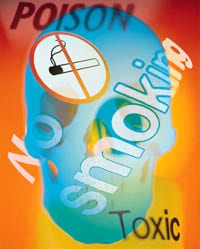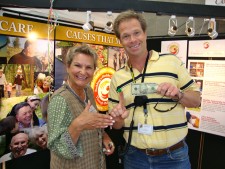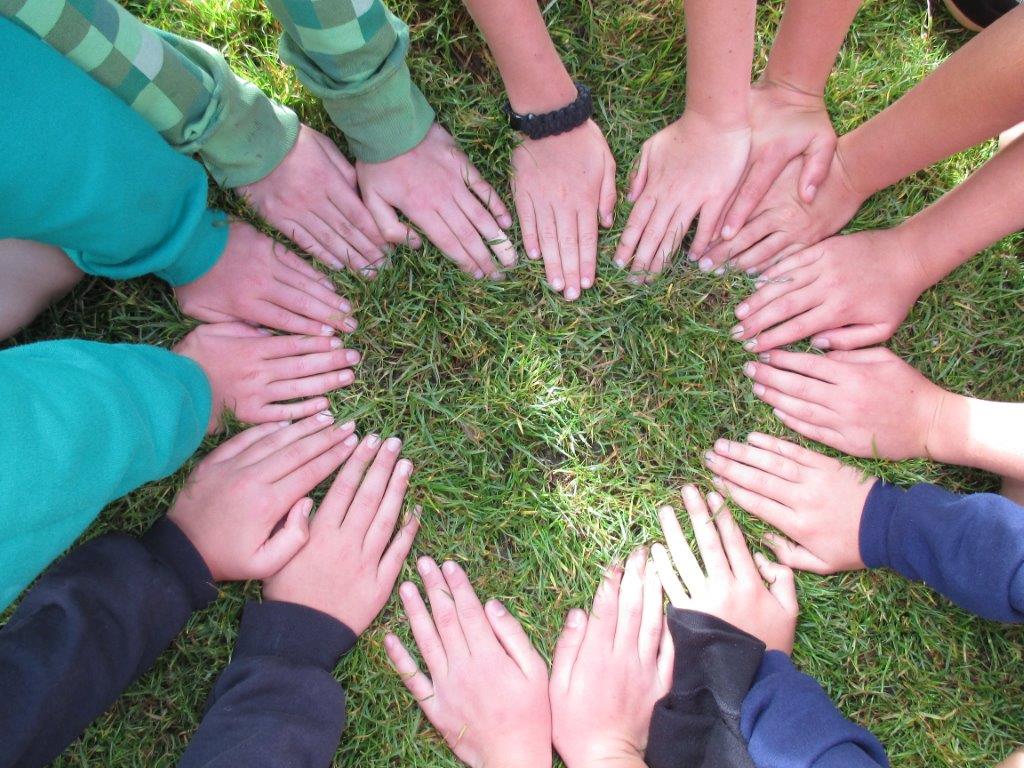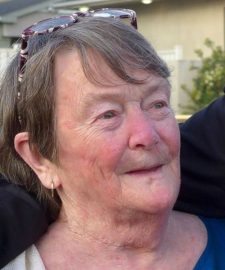“20% of Americans consume 80% of the alcohol. “Kevin Sabet, President of SAM (Smart Approaches to Marijuana.
Board of Trustees Meeting this Friday, February 16th, 2018
Join us at Friday Harbor Presbyterian Church, we appreciate our partnership and allowing us to meet in their space. 11:30am-12pm, a light lunch is served. Meeting runs 12pm-2pm. All welcome to attend. RSVP 360-370-5716.
Big Marijuana Claims vs. the Science
“I just want to get high. The government shouldn’t be able to tell me that I can’t.”
Legalization is not about just “getting high.” By legalizing marijuana, the United States would be ushering in a new, for-profit industry – not different from Big Tobacco. Already, private holding groups and financiers have raised millions of start-up dollars to promote businesses that will sell marijuana and marijuana-related merchandise. Cannabis food and candy is being marketed to children and are already responsible for a growing number of marijuana-related ER visits.[xxx]Edibles with names such as “Ring Pots” and “Pot Tarts” are inspired by favorite candies of children and dessert products such as “Ring Pops” and “Pop Tarts.” Moreover, a large vaporization industry is now emerging and targeting youth, allowing young people and minors to use marijuana more easily in public places without being detected.[xxxi]
[xxx] Alface, I. (2013, May 27). Children Poisoned by Candy-looking Marijuana Products. Nature World News. Accessed https://owl.english.purdue.edu/owl/resource/560/10/; Jaslow, R. (2013, 28 May). Laxer marijuana laws linked to increase in kids’ accidental poisonings CBS News. Accessed http://www.cbsnews.com/8301-204_162-57586408/laxer-marijuana-laws-linked-to-increase-in-kids-accidental-poisonings.
[xxxi] See for example Bryan, M. (2014, 18 April). Pot Smoke And Mirrors: Vaporizer Pens Hide Marijuana Use. NPR 90.9 WBUR. Accessed http://www.wbur.org/npr/302992602/pot-smoke-and-mirrors-vaporizer-pens-hide-marijuana-use?ft=3&f=302992602
[xxxii] Baca, R. (2014, 26 February). Drug dealer says legal pot helps his business (video). The Cannabist. Accessed: http://www.thecannabist.co/2014/02/26/drug-dealer-anything-legalization-helped-business-video/5581/; Gurman, S. (2014, April 4). Legal pot in Colorado hasn’t stopped black market. Associated Press. Accessed http://bigstory.ap.org/article/legal-pot-colorado-hasnt-stopped-black-market
learnaboutsam.org
Joyce Sobel 1943-2018
Rest in Peace, Dear Friend
Joyce Sobel
Joyce Sobel finally retired on Tuesday afternoon January 24th. Her family is deeply saddened and misses her already. She still had much to give and will be greatly missed by all that knew her. She never liked going off island and kept her wish until the end.
Joyce was born on May 19th, 1943 in Quincy, Massachusetts to Robert and Dorothea Leavens. She attended N. Quincy High School and went on to graduate from Jackson College of Tufts University in 1964.
After graduation, Joyce served in the Peace Corp in Kenya in 1965 and 1966 where she was a secondary school teacher. She married Lance Sobel and gave birth to their son Duncan, while stationed in Kenya.
She received a Master’s Degree in Early Childhood Education from Erikson Institute of Loyola University of Chicago in 1970. She then served as the Director of the Evanston (IL) Day Nursery.
Joyce and her family moved to Friday Harbor in 1975. She was not new to Island life, having spent her childhood at a family cottage on Bakers Island, Massachusetts. On San Juan, she found her home for the rest of her life. Over the next 43 years, Joyce dedicated her life to the community of her new island. As a mentor, activist, spokesperson, and advocate for those without a voice. She started many programs for those who had a need and spent countless hours supporting children and families of the Island. Although she wished to remain quietly behind the scenes, she was never afraid to be heard when she deemed it necessary. She was a woman of strong action and perseverance. Joyce’s passion was giving to her community, and she took great pride in knowing she had served it well.
Joyce is survived by and greatly missed by her son Duncan, his wife Mary and the apples of her eye, her two grandchildren Veronica and Logan of Los Angeles CA. She is also survived by and greatly missed by her brother Robert and his partner Betsy of Newburyport, Massachusetts. Ultimately, Joyce is survived by us all. Although we are currently filled with sadness and grief, her memory will live on and she will continue to inspire us. Her greatest gift is that we will feel her presence for years to come, in the multitude of ways she touched so many lives big and small.
A memorial celebration of Joyce’s life will be held on the Island, at a later date this spring/summer.
If you would like to celebrate Joyce and the tremendous work she accomplished, please consider making a gift to the San Juan Island Community Foundation and request that it go to the “SJI Family Resource Center Changing Lives” fund. All proceeds will be used for the SJI Family Resource Center’s current Building Expansion initiative, and to support the center’s free programs and services.
Smoking Takes It Tolls in WA. State
| Deaths in Washington from Smoking | |
|---|---|
| Adults who die each year from their own smoking | 8,300 |
| Kids now under 18 and alive in Washington who will ultimately die prematurely from smoking | 104,000 |
Smoking kills more people than alcohol, AIDS, car crashes, illegal drugs, murders, and suicides combined — and thousands more die from other tobacco-related causes — such as fires caused by smoking (more than 1,000 deaths/year nationwide) and smokeless tobacco use. tobaccofreekids.org
The Dangers of Hookah Smoking
Hookahs are water pipes that are used to smoke specially made tobacco that is usually flavored. They are also called a number of different names, including waterpipe, narghile, argileh, shisha, hubble-bubble, and goza. Hookah smoking is typically practiced in groups, with the same mouthpiece passed from person to person.
 In recent years, there has been an increase in hookah use around the world, most notably among youth and college students. The Monitoring the Future survey found that in 2011, 18.5% of 12th grade students in the United States had used hookahs in the past year. This rate was slightly higher among boys (20%) than girls (17%). Other small-scale studies on young adults indicate that hookah smoking is more prevalent among university students in the United States, with past-year use ranging from 22% to 40%.
In recent years, there has been an increase in hookah use around the world, most notably among youth and college students. The Monitoring the Future survey found that in 2011, 18.5% of 12th grade students in the United States had used hookahs in the past year. This rate was slightly higher among boys (20%) than girls (17%). Other small-scale studies on young adults indicate that hookah smoking is more prevalent among university students in the United States, with past-year use ranging from 22% to 40%.
The Risk
According to a study published in the 2012 issue of CDC’s Preventing Chronic Disease, many hookah smokers believe that smoking a hookah carries less risk of tobacco-related disease than cigarette smoking. However, hookah smoke contains many of the same harmful toxins as cigarette smoke and has been associated with lung cancer, respiratory illness, low birth weight, and periodontal disease. According to a report from the World Health Organization (WHO) [PDF - 550KB], a hookah smoking session may expose the smoker to more smoke over a longer period of time than occurs when smoking a cigarette. Also, due to the method of smoking—including frequency of puffing, depth of inhalation, and length of the smoking session—hookah smokers may absorb higher concentrations of the same toxins found in cigarette smoke.
Hookah Smoke and Cancer

- The charcoal used to heat tobacco in the hookah increases the health risks by producing smoke that contains high levels of carbon monoxide, metals, and cancer-causing chemicals.
- A typical 1-hour-long hookah smoking session involves 200 puffs, while an average cigarette is 20 puffs. The volume of smoke inhaled during a typical hookah session is about 90,000 milliliters, compared with 500 to 600 milliliters inhaled when smoking a cigarette.
- Using a hookah to smoke tobacco poses a serious potential health hazard to smokers and others exposed to the emitted smoke.
Educating Youth About the Dangers
According to a study published in CDC’s Preventing Chronic Disease entitled Opportunities for Policy Interventions to Reduce Youth Hookah Smoking in the United States, one way to reduce youth hookah use is by educating young people about the harmful health effects associated with hookah smoking. The study suggests requiring warning labels on tobacco products and advertisements. Health organizations echo these suggestions. The WHO’s Study Group on Tobacco Product Regulation (TobReg) urges consideration of the following public health initiatives to reduce hookah smoking and associated disease:
- Education of health professionals, regulators, and the public at large is urgently needed about the risks of hookah smoking, including high potential levels of second-hand exposure among children, pregnant women, and others.
- Hookahs and hookah tobacco should be subjected to the same regulations as cigarettes and other tobacco products.
- Hookahs and hookah tobacco should include strong health warnings.
- Claims of harm reduction and safety should be prohibited.
- Misleading labeling, such as “contains 0 MG tar,” which may imply safety, should be prohibited.
- Waterpipes should be included in comprehensive tobacco control efforts, including prevention strategies and cessation interventions.
- Hookahs should be prohibited in places consistent with bans on a cigarette and other forms of tobacco smoking.
More Information
- CDC Hookah Fact Sheet
- Bidi and Hookah Use Among Canadian Youth: Findings From the 2010 Canadian Youth Smoking Survey
- Opportunities for Policy Interventions to Reduce Youth Hookah Smoking in the United States
- Prevalence of Waterpipe Tobacco Smoking Among Population Aged 15 Years or Older, Vietnam, 2010
- Tobacco Use Prevention and Control
- WHO Study Group on Tobacco Product Regulation [PDF - 550KB]
- Hookah Smoking: A Growing Threat to Public Health [PDF - 1.33MB]
Rock Solid Youth Rocks! Presenting at National Leadership Forum in DC
Immediate Release:
Rock Solid Youth presents at National Leadership Forum in DC
The San Juan Island Prevention Coalition is excited to share that Zach Fincher will be presenting at CADCA’s 28th National Leadership Forum, the nation’s premier and largest training event for community prevention leaders, treatment professionals and researchers, and SAMHSA’s 14th Prevention Day. Held Feb. 5-8, 2018 in National Harbor, MD, the CADCA Forum brings together nearly 3,000 local, state and national experts in the drug prevention and treatment fields.
Zach’s training session, entitled “Rock Solid Youth Rocks!”, is one of more than 70 in-depth training sessions offered at the CADCA Forum. Zach will be presenting this course as he shares his experiences with prevention projects he’s led and the training opportunities he’s learned from since 2011, culminating this year, in his team Rock Solid winning the Grand Prize honors at the WA. State Spring Youth Forum.
Youth Leadership Training opportunities have been the cornerstone of our San Juan Island Prevention Coalition, investing in youth leadership skill-building events has been pivotal in gaining youth support and involvement. Our San Juan Island Prevention Coalition adopts the philosophy of “Youth-Led, Adult Guided,” an NYLI motto. Our youth want to help, but often don’t know the resources available or lack the skills to move forward. Zach will discuss how we keep engaging our youth and giving them a voice at the table, but more importantly, in their community, while helping them to leverage their power in implementing the seven strategies to affect community change.
Also, other Rock Solid members: Chiara Power, Luke Fincher, along with chaperone, Penelope Haskew and Rock Solid Team Advisor Debbi Fincher will be attending the Forum as part of the team’s Grand Prize at the WA. State Spring Youth Forum. Attending the National Leadership Forum as a team, they can harness their new skills and knowledge of the latest strategies to fight substance abuse as they hear from nationally-known prevention experts, federal administrators, and concerned policymakers, which they can share with our community upon their return. Rock Solid is grateful to be included in this one-of-a-kind event!
For details about the CADCA Forum, including training session descriptions, speaker information, and more, visit www.cadca.org/events/forum2018. The San Juan Island Prevention Coalition is a member of CADCA. The mission of CADCA (Community Anti-Drug Coalitions of America) is to strengthen the capacity of community coalitions to create and maintain safe, healthy and drug-free communities globally.
Date: January 17, 2018 Contact: Cynthia Stark-Wickman, Executive Coordinator San Juan Island Prevention Coalition Website: sjipc.org 360-370-7516Take Back Your Meds Program
5 Permanent Drop-Off Locations:
San Juan County, WA:
Friday Harbor Drug 210 Spring Street, Friday Harbor, WA. 98250 Hours: Monday-Friday 9am-7pm, Saturday 10am-5pm, Sunday 10am-2pm. NO Controlled Substances collected. 360-378-4421
Ray’s Pharmacy 68 W Beach Rd. Eastsound, WA. 98245 NO Controlled Substances collected. 360-376-2230
San Juan County Sheriff’s Office-San Juan Island 96 Second St. Friday Harbor, WA. Accepts Controlled Substances 24/7. 360-378-4151
Lopez Island Sheriff’s Substation
Orcas Island Sheriff’s Substation
The goal is to decrease the number of accidental poisonings occurring in the household due to unwanted medications. This can be due to medication mistakes due to excess unused medications, teenage abuse of opiates, and childhood poisoning due to accessible medications. Currently, accidental poisoning is the number one reason for accidental death in the state of Washington.
The Washington Poison Center phone number is 1-800-222-1222.
Helping to Protect Youth from Big Marijuana
Recent research has also found that arrests for young, communities of color have gone up since legalization in Colorado.
Let’s Invest In Prevention!
A State-by-State Look at the
1998 Tobacco Settlement 19 Years Later
Despite receiving over $27 billion from the tobacco settlement and tobacco taxes, the states continue to severely underfund tobacco prevention and cessation programs proven to save lives and money.
Since the states settled their lawsuits against the major tobacco companies in 1998, our annual reports have assessed whether the states are keeping their promise to use a significant portion of their settlement funds – estimated at $246 billion over the first 25 years – to attack the enormous public health problems caused by tobacco use in the United States.
Despite receiving huge sums from the settlement and collecting billions more in tobacco taxes, the states continue to shortchange tobacco prevention and cessation programs that we know save lives and money.
In the current budget year, Fiscal Year 2018, the states will collect $27.5 billion from the settlement and taxes. But they will spend less than 3 percent of it – $721.6 million – on programs to prevent kids from smoking and help smokers quit.
Meanwhile, tobacco companies spend $8.9 billion a year – $1 million dollars every hour – to market their deadly and addictive products. This means tobacco companies spend $12 to market their products for every $1 the states spend to reduce tobacco use.
This enormous gap undermines efforts to save lives and health care dollars by reducing tobacco use, the No. 1 cause of preventable death in the United States.
This report is issued by the Campaign for Tobacco-Free Kids, American Heart Association, American Cancer Society Cancer Action Network, American Lung Association, Robert Wood Johnson Foundation, Americans for Nonsmokers’ Rights and Truth Initiative.
WA STATE FUNDING FOR TOBACCO PREVENTION:
Washington
| FY2018 | FY2017 | |
|---|---|---|
| State Ranking | 42 | 39 |
| State Spending on Tobacco Prevention | $1.4 million | $2.3 million |
| Percent of CDC Recommended Spending ($63.6 million) |
2.2% | 3.6% |
| Country | |
|---|---|
| Total State Tobacco Revenue | $563.0 million |
| CDC Recommended Spending | $63.6 million |
| Total State Spending | $1.4 million |
| Estimated Annual Tobacco Company Marketing in State | $89.1 million |
| Adults who smoke | 14.0% |
|---|---|
| High school students who smoke | 6.3% |
| Death caused by smoking each year | 8,300 |
| Annual health care costs directly caused by smoking | $2.81 billion |
| Proportion of cancer deaths attributable to smoking | 27.4% |
| Residents’ state and federal tax burden from smoking-caused government expenditures | $751 per household |
| Estimated annual tobacco industry marketing in state | $89.1 million |
| Ratio of industry marketing to state tobacco prevention spending | 63.4 to 1 |
Click on each state to view the full data. Follow this link for information on the District of Columbia.
- Alabama
- Alaska
- Arizona
- Arkansas
- California
- Colorado
- Connecticut
- Delaware
- District of Columbia
- Florida
- Georgia
- Hawaii
- Idaho
- Illinois
- Indiana
- Iowa
- Kansas
- Kentucky
- Louisiana
- Maine
- Maryland
- Massachusetts
- Michigan
- Minnesota
- Mississippi
- Missouri
Other key findings include:
- The $721.6 million the states have budgeted for tobacco prevention amounts to a small fraction of the $3.3 billion the Centers for Disease Control and Prevention (CDC) recommends for all states combined. Not a single state currently funds tobacco prevention programs at the level recommended by the CDC.
- Only two states – California and Alaska – provide over 90 percent of the recommended CDC funding. Twenty-nine states and the District of Columbia are spending less than 20 percent of what the CDC recommends.
- States with well-funded, sustained tobacco prevention programs continue to report significant progress. Florida, with one of the longest-running programs, reduced its high school smoking rate to 5.2 percent, one of the lowest ever reported by any state.
The United States has made great strides and reduced smoking to record lows – 15.1 percent among adults in 2015 and 8 percent among high school students in 2016. But tobacco use still kills more than 480,000 Americans and costs the nation about $170 billion in health care expenses each year.
There are also large disparities in who still smokes and who suffers from tobacco-related diseases in the U.S. Smoking rates are especially high in a swath of 12 states in the Midwest and South, an area called “Tobacco Nation” in a recent Truth Initiative report. Nationwide, smoking rates are highest among people who live below the poverty level and have less education, American Indians/Alaska Natives, LGBT Americans, those who are uninsured or on Medicaid, and those with mental illness. These differences are in large part due to the tobacco industry’s targeting of vulnerable populations through advertising, price discounting and other marketing strategies.
By fully implementing proven strategies, the states can reduce tobacco use among all Americans and make the next generation tobacco-free.
Written by tobaccofreekids.org Thank you for caring for our kids!











